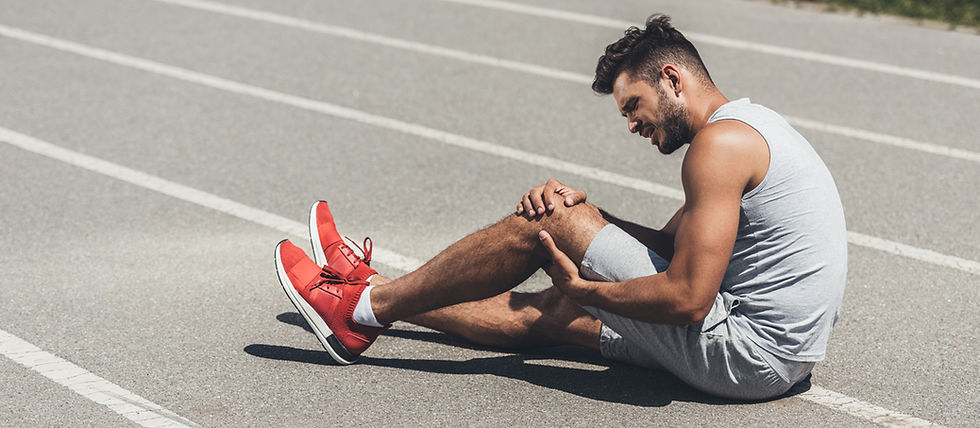"The Deep Freeze". Understanding the bodies frost, that is the "Frozen Shoulder"
- Henry Fensome

- Sep 18, 2019
- 3 min read

What is the enigma that is frozen shoulder?
Frozen shoulder also known as 'Adhesive Capsulitis' is a spontaneous condition of the shoulder associated with pain and stiffness due to the contracture of the joint capsule.
What Causes the shoulder to freeze?
At present the cause of frozen shoulder is unknown. But there have been links made to our body secreting extra collagen type 2 fibres which in turn causes the soft tissues to contract around the Glenohumeral (Shoulder) joint and the joints capsule itself also contracts restricting movement and becoming inflamed causing pain. There are 3 stages to Adhesive capsulitis:
The Freezing Stage: also known as the painful stage. In this stage shoulder pain occurs with movement and the range of movement starts to become limited.
Frozen Stage: Shoulder pain usually begins to decrease in this stage but the range of movement is still very limited.
The Thawing Stage: Shoulder range of movement improves and starts to return to normal.
Who does it affect?
It is twice as likely to affect women more than men between the ages of 40-60, and if you are diabetic it is 5 times more likely to affect you than those in the general population.
Risk Factors:
Age (40+)
Prolonged immobility of the shoulder increases the risk of developing frozen shoulder.
Systemic disease (Such as: Diabetes and hyperthyroidism)
Previous Trauma
How Can it be Treated?
Early interventions are the application of moist heat to the shoulder to allow the joint to loosen. GP's may prescribe muscle relaxants and NSAID's (Ibuprofen/Naproxen). Range of movement exercises are also recommended early as this aims to maintain movement.
Other options are:
Massage therapy - to help loosen muscle tightness and restrictions
Manual Therapists (Osteopaths, Chiropractors & Physiotherapists) to perform mobilisations and manipulations emphasising on the anterior portion of the shoulder and also manipulations to the thoracic and neck to allow mobility and to prevent restrictions in surrounding joints.
Electrotherapy - consider TENs machines to help modulate pain perception, ultrasound has some evidence supporting its use in increasing blood flow to the local tissues to aid recovery.
Acupuncture - Localised points to help with pain relief
Medications - NSAIDS, Painkillers and Corticosteroid injections can help with pain levels.
Surgery - This only occurs in a very few cases and should be considered the last resort.
How long can it last?
The age old question "whats the prognosis doc?". With good compliance, recovery with conservative care is usually excellent. The healing process will be slow and can last from anywhere between 6-24 months, but it will get better!!
What are the best Exercises/Stretches to maintain movement?
Pendulum Arm Swings
Bend at the hips approximately 75 to 90 degrees and let your affected arm hang down toward the floor. Shift your weight side to side, letting your arm swing freely side to side. Shift your weight forward and backward, letting your arm swing freely front to back.

Towel Pulls
With one arm bring a towel over your shoulder behind your back. Hold the towel as shown. Gently pull upwards stretching the affected arm behind your back. Hold for approx 20 - 30 seconds

Finger Walking up the wall
Stand with your shoulder about 2 feet from the wall. Raise your arm to shoulder level and gently “walk” your fingers up the wall as high as you can. Hold for a few seconds. Then walk your fingers back down. Repeat 3 times. Move closer to the wall as you repeat. Build up to holding each stretch for 30 seconds

Door Stretches
Stand in a doorway and place both hands on either side of the door, at about shoulder height. Lean forward to give a nice passive stretch to the subscapularis. Hold for between 15-30 seconds.

Resistance bands (External rotation and abduction)

Internal Rotation - Stand next to a closed door, and hook one end of a rubber exercise band around the doorknob. Hold the other end with the hand of the affected arm, holding your elbow at a 90-degree angle. Pull the band toward your body two or three inches and hold for five seconds. Repeat 10 to 15 times, once a day.

External Rotation - Hold a rubber exercise band between your hands with your elbows at a 90-degree angle close to your sides. Rotate the lower part of the affected arm outward two or three inches and hold for five seconds. Repeat 10 to 15 times, once a day
Attempt to add weight once it can be tolerated as this applies traction to the joint.



From my own experience, disco win casino is a decent platform for casual and mid-level players. The site runs smoothly on both desktop and mobile, which is handy. Their game collection includes all the popular stuff — slots, blackjack, roulette, plus live dealer games. I liked the payment options too: cards, e-wallets, and even Bitcoin if you prefer crypto. Withdrawals were pretty quick, around 24-48 hours, no surprises there. Customer support responded quickly when I had a question. They operate under a Curacao license, so it’s legit, but keep in mind that it’s not the top-tier regulatory body. Still, for the vibe and game variety, I’d say it’s worth a try.